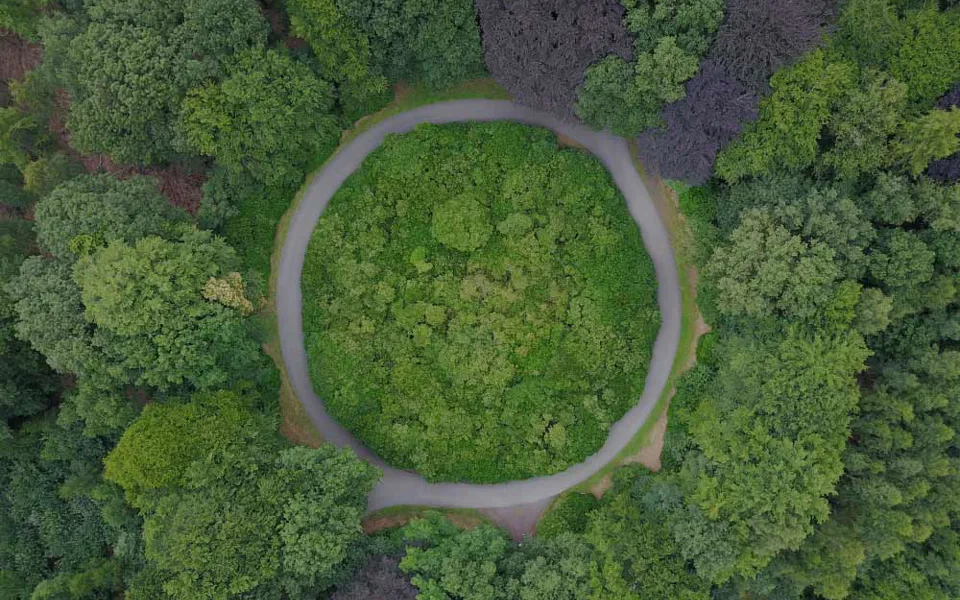
Five steps to drive the circular economy through your procurement process
11 May 2021
In this blog in our ‘achieving a decade of action’ series, Ricardo’s Associate Director for Circular Economy and Sustainability, Jess Twemlow, looks at how a circular approach to procurement will benefit your organisation.
The aim of a circular economy is deceptively simple - to keep a product in use for as long as possible, extract maximum value from it whilst in use, and then recover and regenerate valuable components and materials when it finally reaches the end of its life.
In contrast, most organisations’ procurement practices follow the traditional, and unsustainable, buy-use-bin linear economy approach - where opportunities to repair, re-use, refurbish, remanufacture and recycle are rarely considered.
Adopting procurement practices that support a circular economy will challenge the way your organisation uses products and encourage you to look beyond initial purchase prices and to consider the whole life of products you buy. You will ask yourself simple but potentially transformational questions like ‘should we lease our IT equipment rather than buying?’, and ‘can we purchase products that contain recycled content?’
The phrase ‘circular procurement’ often gives the impression that responsibility for making the changes that will support the circular economy rests solely with your purchasing department. In practice, the changes required transcend functional lines – circular procurement starts as soon as a member of your staff decides there is a need for a new product, whether that is new office equipment, new electrical tools or a new vehicle. This means that new ways of thinking have to be firmly embedded across your organisation.
Step 1 - Determine your needs
Circular procurement is about more than just buying things. The best way you can support the circular economy is by not buying anything new at all.
Instead of buying new, can you:
- Extend an existing product’s life, by repairing, refurbishing or upgrading it?
- Buy a service rather than owning a product? For example, could you lease ICT equipment rather than procuring your own equipment?
- Purchase refurbished equipment? Quality guarantees on refurbished equipment is very often comparable to those for new equipment.
- Share equipment with other departments or other organisations?
If it is decided that a new product is required, you need to think about how you will define ‘circular’ for the products you are buying. There is no single definition for what a circular product is, but you might want to buy products that:
- Are designed and manufactured in ways that use less materials.
- Use alternatives to virgin materials. For example, products that are made with recycled or biobased materials.
- Will last a long time because of their quality, repairability and/or upgradability.
- Maximise the potential re-use of a component. For example, a product that is designed for disassembly.
- Are biodegradable or maximise the recyclability of components.
When making new purchases, you should consider which internal stakeholders need to be involved to help determine your needs. These stakeholders may have different requirements and have a different perspective when it comes to the right solution. As well as the purchasing department, this might include representatives from operations to help determine the actual product needs, representatives from finance to help calculate the total cost of ownership and legal representatives to ensure that the contract contains the right incentives.
Step 2 – Work with suppliers
Circular procurement often requires a shift in supplier relationships. From a situation where technical specifications are set by the purchasing organisation, to a process where they are developed in partnership with suppliers. Therefore, supplier engagement is an important step to communicate your needs and identify the availability of the most suitable products and services.
Dialogue with suppliers can also help identify the feasibility of alternative supply models that support the circular economy, such as product-service systems, leasing options, buy-per-use, shared use, and buying and selling back.
Likewise, if a suitable product or service is not available on the market, you could establish a partnership with a supplier. A partnership provides a framework for research and development, piloting and the development of new products and services that can support the circular economy.
Step 3 – Develop your specification
Based on the outcomes from your supplier engagement, you can adjust the specifications for the products and services your organisation purchases. When designing your tender specification, you should identify whether a technical or a functional approach would be more appropriate.
Traditional procurement exercises are often based on technical specifications. Such an approach often means suppliers can only differentiate themselves with their proposed approach or price. Technical specifications can also limit the creativity and innovation of suppliers.
Functional specifications on the other hand allow suppliers to propose the technical solutions that they can offer to satisfy your requirements. This means that instead of asking for a product, you ask for the functionality that a product can offer – as Harvard marketing professor Theodore Levitt said: “People don’t want to buy a quarter-inch drill. They want a quarter-inch hole”.
Functional specifications offer suppliers greater freedom to develop innovative solutions, and, within a circular economy, this is especially relevant, as new innovations are being developed all the time.
Step 4 – Evaluate and award contracts that meet your new specifications
Evaluating supplier offers can be complicated, especially where your specification has been framed in a way that encourages an innovative approach.
Implementing circular procurement also means looking beyond the lowest upfront purchase cost. Some products and services that tick all the boxes when it comes to supporting the circular economy can cost more initially. But they can also be more cost-efficient in the long-term.
For example, in a traditional procurement exercise, suppliers will expect you to bear the item’s additional cost of disposal at the end-of-life stage. However, suppliers operating alternative circular business models will often plan to take products back from you when you are finished with them and this will be built into their costing.
Step 5 – Manage the contract
Once a contract is awarded, it is essential that you monitor that it is being fulfilled as agreed. Ongoing improvements can also be built into the management of the contract too. This approach is particularly useful where markets are developing quickly and the full performance requirement might not be available at the time of the procurement. For example, you might look to increase the recycled and/or re-used content of a product over the lifetime of the contract.
If a circular economy is to be realised, then a new approach to procurement is needed. An approach that:
- Is more collaborative.
- Involves organisations considering how things are sourced, made, used and disposed of at the end-of-life.
- Enables organisations to have the confidence to work with the market to develop new solutions that are more circular.
We’re here to help. If you are looking to play your part in the transition to a circular economy and change the way you procure goods and services, please get in touch.





 Follow Ricardo plc for regular updates
Follow Ricardo plc for regular updates




